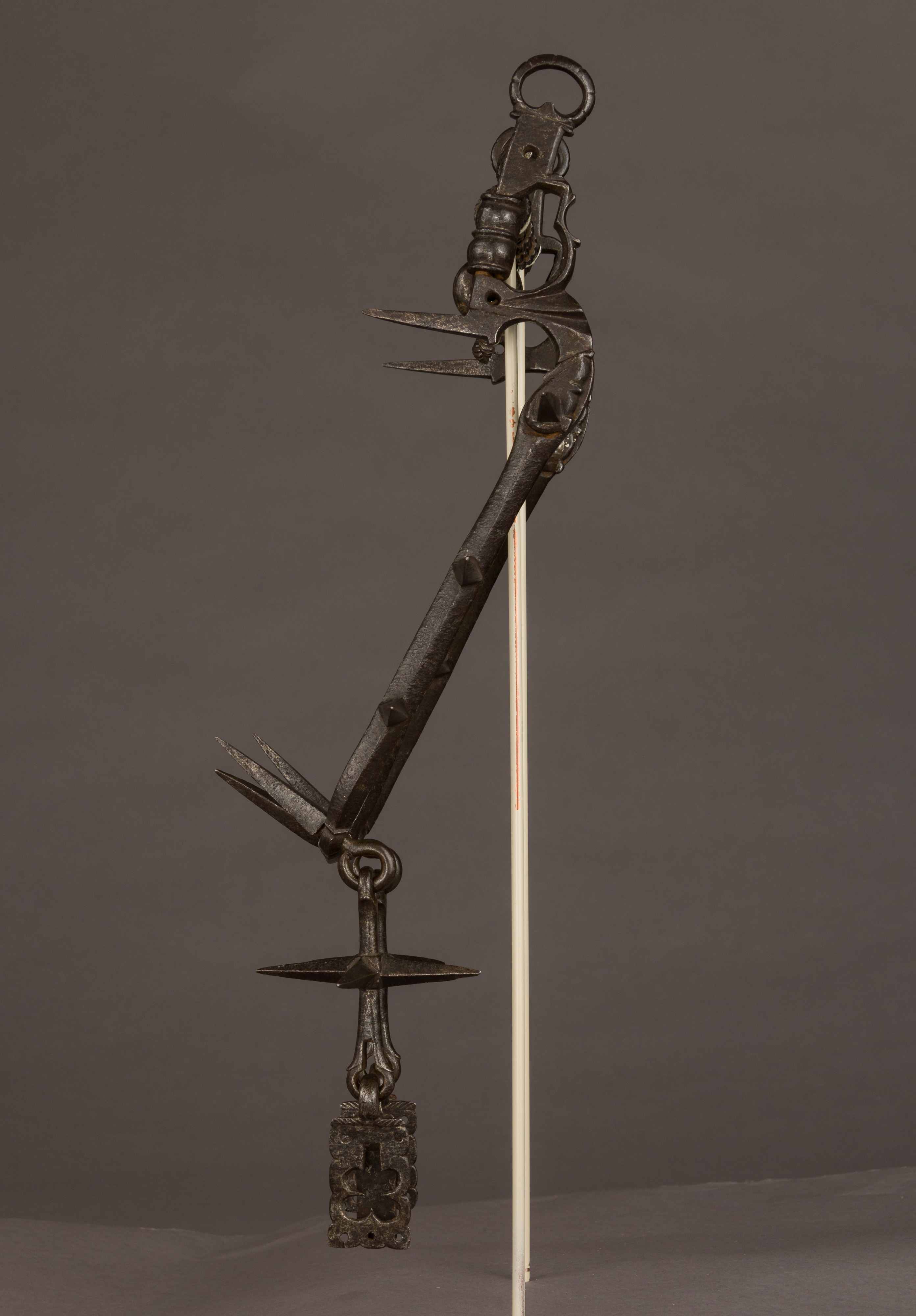Curb Bit
Not on view
According to contemporary equestrian manuals, the mouthpiece of this bit was designed for a horse with a hard mouth and a thick tongue.
Medieval style U-shape swinging shanks, visible on most horse bits until the 14th century, were still occasionally used in the 16th century, but they were rare, and essentially meant for mules (said to have very bad and hard mouths) or recalcitrant horses.
The few representations of spiky shanks found in bit books assign them different purposes, some stating that they ‘prevent the horse from catching the shanks and putting them in its mouth’, others that they are ‘war shanks for preventing catching them with the hand’. Yet, in any case, the spikes of this bit seem too long and widely spaced to match with the published examples.
The way these shanks are articulated, however, corresponds to a type of bit recommended for hunting by the Italian Pirro Antonio Ferraro in his equestrian treatise published in 1602 (Cavallo Frenato). Such a use would make sense with these spikes too, as they recall some contemporary dog collars used for wolf hunting. In this case the spikes would have protected the horse’s nose from being caught and bitten by a wild animal during the hunt.
Due to rights restrictions, this image cannot be enlarged, viewed at full screen, or downloaded.
This artwork is meant to be viewed from right to left. Scroll left to view more.






